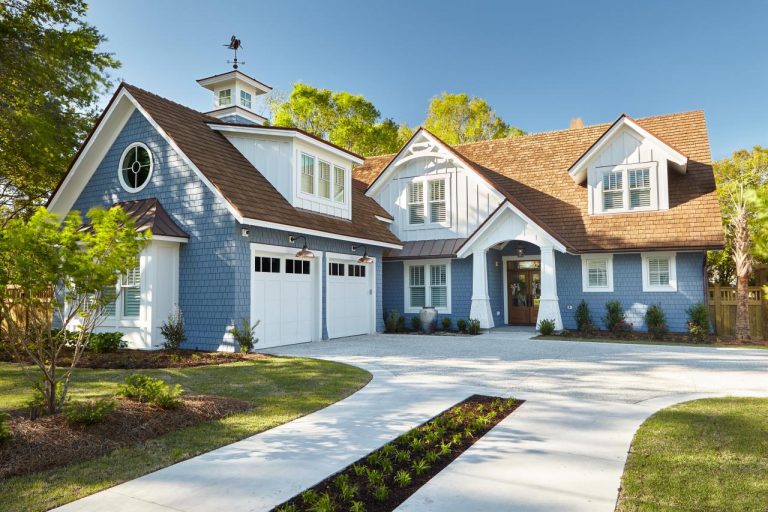As the global awareness of the need for environmentally friendly solutions continues to rise, so too has the desire for individuals and businesses to put eco-friendly solutions in a place like eco-friendly plumping.
Being environmentally conscientious has become an attractive quality in nearly all sectors of commerce, and is especially evident in such industries as construction, landscape design, hospitality, and architecture.
As a landscaping or gardening professional, you not only have an obligation to produce the best work possible for your clients, you have the choice to do this in an environmentally friendly fashion. Whether this is using green irrigation techniques, implementing the use of recycled materials, or using environmentally friendly fertilizers, the choices of these solutions are both available and abundant.
Here, we’ll outline the reasons why environmentally friendly landscape and gardening design is important, and how you can implement these practices in your business.
How Green Landscaping Solutions Help
If you’re into landscaping design, or you own your own landscaping business, you’re in the position to help promote sustainability through your own efforts as a business owner.
Every person’s property represents who they are as not only a homeowner but as a person as well. As such, creating an eco-friendly environment through landscaping techniques and design is a great way to introduce sustainability into a neighborhood. And, this is an attractive and eye-catching trend.
These solutions can all be achieved in a few of the following ways:
- Native grasses
- Ground hugging plants
- Hardscapes
- Flower Beds
- Natural borders
- Eco-friendly lawns
While the above list only mentions a few solutions, keep in mind that any green solution is beneficial when incorporated into property design.
Garden Lawns
Having native grasses and plants on your property doesn’t need to be unsightly or unkempt. And, you can perform upkeep and maintenance as you would a normal turf-grass lawn.
Native plants and grasses actually take less water, fertilizer, and maintenance than any species of turf-grass. These plants also help restore soil composition as well as supporting native ecosystems.
Groundcover Lawns
If you enjoy that green lawn that’s been an American standard for the past century, you don’t have to sacrifice your greenery, only your lawnmower.
Ground hugging plants such as succulents don’t need trimming. The same is true for sedges and other ground-covering plants. By implementing these instead of turf-grass, the property you’re working on will have a lush green space that barely needs any maintenance at all.
Getting Green Contracts
While you might be just starting out in landscaping, if you really want to make a name for yourself as a green landscaper, you’ll have to do a little legwork.
First and foremost, you’ll need to create a professional appearance so you can speak to new clients about green solutions, especially if they’re skeptical or have never heard of green alternatives before.
Instead of showing up at a prospective client’s home in your old, rusty truck, consider renting a work truck with a towing package and show up with several of your green products. This way they’ll be able to actually see the products, instead of you giving a long-winded speech about them and hoping they’ll be curious to try.
Additionally, seek out larger complexes and approach the landlord or property owner about implementing sustainable options into their property landscapes.
Present the alternative as an attractive option, and explain to them that more tenants will want to rent from them if they should choose to implement a green lifestyle within their community.
Hardscape Alternatives
While eliminating a green lawn altogether will be a hard sell even for a seasoned salesman, the benefits are worth the expense.
Hardscapes eliminate the need for mowers and gas-operated lawn equipment. This solution also reduces and eliminates the pollution from fertilizer, pesticide, and herbicide that is used with traditional turfgrass.
You don’t have to eliminate an entire lawn with a hardscape. In fact, allowing for natural gravel pathways and pavers in place of wide turf lawns actually helps to irrigate the surrounding native soils.
Additionally, hardscapes can be implemented and accented in some of the following ways:
- Planting wildflower meadows
- Native floral beds
- Lighted pathways with integrated planters
- Crushed gravel with drought-resistant trees
Hardscapes are common in our western states, as water resources are scarce in many western locations.
But, if you’ve ever been out West then you know that you don’t have to trade in aesthetics in place of sustainability. Rockscape lawns can be just as beautiful and enjoyable as traditional turf-grass.
Eco-Friendly Products
As a green landscaper, you’ll want to use as many eco-friendly products as possible. This can include using recycled building materials, organic fertilizers, and herbicides as well as low flow or reduced water irrigation systems.
The range of eco-friendly landscaping solutions is becoming more and more prevalent today. Even when building planters you can use reclaimed wood from the local area. Not only are you saving a few trees by using reclaimed wood, but you can also incorporate a little bit of a backstory into your landscape.
Even the tools you use, from a garden awl to your shovel, can come from recycled materials. The options are endless. All you have to do is seek them out and use them.
Going Green and Going Forward
In a world where our carbon levels are in uncharted territory, we only have so much time left before the damage is completely irreversible. This means that in 10 generations, your lineage might have a very difficult time living in such a hostile world.
The time for green solutions is now, and as a professional landscaper, you have the means to implement green solutions and help in the reversal of global climate change. All you have to do is educate yourself, and step up to set an example for everyone else to follow.

